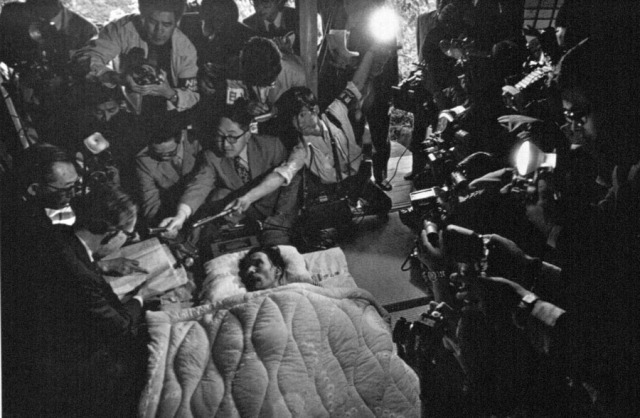I was really fascinated by Eugene W. Smith and Aileen M. Smith’s book Minamata (Holt, Rinehart, and Winston, 1975) that documented the fight of Japanese families against Chisso, the petrochemical company that refused to take responsibility for countless cases of debilitating mercury poisoning in the town of Minamata. The Smiths were photojournalists who made it their mission to capture in photographs and text the story of the injustices of giant corporations and government vs. the laypeople, patients, and their families. What was surprising was how the American journalists were beaten in the process to the point where Eugene said that he was going blind because of the injuries. The narrative was heartwrenching and provoked a lot of anger since these environmental and social issues are still prevalent today. While in the 1950s, Minamata was still reeling from WWII and now this industrial pollution that affecting their water and their fish, modern day society is dealing with BP’s oil leak, China’s industrial pollution, and global warming. People are still being pushed over in the name of capitalism, children are still being born with horrible birth defects due to industrial pollution and governments and private corporations are still trying to cover this up or refuse to take responsibility. The lack of morality in parts of human society is truly saddening.
The first image that I chose for the looking assignment is very striking in its graphic composition. The harsh contrasts and dark silhouettes of the fishers make the one fish in the next stand out, glistening in the sun. While fish has always been the lifeblood of the sea, and from the poem, of the fishers, it was because of the fish that people died or lost functions because of mercury poisoning. It is ironic that fish – which we associate with food, health, prosperity, and the goodness of the land – has been tainted by the efforts of humans to create products that are harmful to the fragile ecosystems and to human lives. The fish in the net is dead, but the posture of the person on the left and the silhouettes of the two fishers imply that they are already dead too.
The second image is quite different but piqued my interest because it relates to the media today. This one depicts Japanese politicians, environmental planners, and corporate leaders visiting the homes of the ill who were affected by mercury poisoning to offer their condolences and words of support. From the Smiths’ account, these public and documented gestures (as per the slew of journalists and photographers in the image) were nothing but empty public relations ploys to pretend that they were doing something, but really, they were not taking any responsibility to the horrific damage their company and their inaction had done. It reminds me of coverage of the BP oil spill and how after a period of constant news reporting, it has stopped, and in some ways, has simultaneously left the minds of Americans. The attention span of people and the media are so limited when it comes to disasters. This photo is almost humorous in the exaggerated press coverage, relative to the fact that nothing was done to help the man who was ill.
This type of expose journalism has its risks and its rewards. The story of Minamata reminds me of China’s continuing industrial pollution that has resulted in its exponential growth in manufacturing and production. Its reliance on coal and other dirty energies, its irresponsible waste dumping practices, and its blatant disregard for human life and liberties deserves to be recognized. Lu Guang was recognized by the Asia Society for his work in depicting the atrocities that still occur. These eye-opening photos in color, are an even more depressing look into the lives of societies with government-controlled media. http://www.chinahush.com/2009/10/21/amazing-pictures-pollution-in-china/
This post is quite empassioned compared to the others because it is the dissemination of stories of what life is like that raises awareness and spurs action. It wasn’t until Jacob Riis’ “How the Other Half Lives” that people came to understand slum living and the need for ventilation. Pictures can start action, which is precisely why heavy-handed governments suppress journalist and photography. My only hope is that with the efforts of positive-minded people, we can change how people treat the environment and their fellow people for the better, we can support only companies that have morals and socially responsible values, and that love for the Earth and all its life forms can overpower greed.


